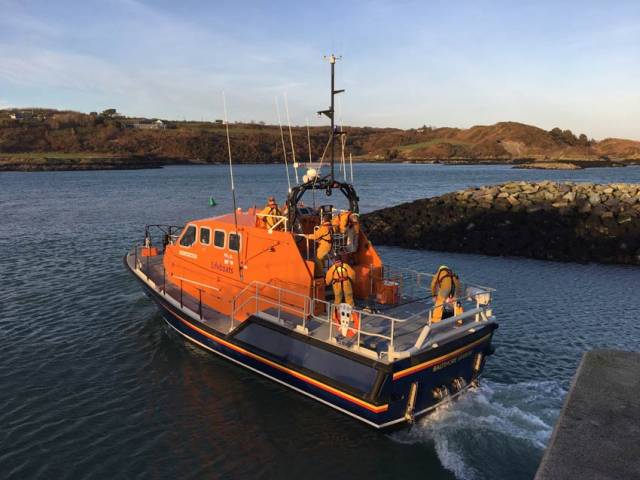#RNLI - Baltimore RNLI launched yesterday morning (Tuesday 11 September) to a swimmer reported missing on a swim from Skibbereen to Baltimore in West Cork.
The inshore lifeboat was called to search the Ilen River for the swimmer after a safety boat lost visual contact with him during a squall north of Inishbeg.
Within an hour they were joined by the all-weather lifeboat to search the narrower channels of the river. Toe Head Coast Guard and the Shannon-based Irish Coast Guard helicopter Rescue 115 also assisted.
Some 40 minutes later, at 11.10am, Mizen Head Coast Guard informed all rescue agencies that the swimmer had made his way safely to shore, and all were to stand down.
“This was a great example of multiple rescue agencies working together and thankfully ended with a good outcome,” said Baltimore RNLI press officer Kate Callanan.
Elsewhere in Cork, Ballycotton RNLI launched both their all-weather and inshore lifeboats on Friday afternoon (7 September) to a capsized small sailing dinghy off Ballynamona beach.
A concerned member of the public had witnessed the casualty having difficulty righting the capsized dinghy, which was some 400 metres from the beach.
The crew on board the inshore lifeboat located the casualty in the water approximately 80m from the scene attempting to swim ashore.
The male casualty, believed to have been in the water for nearly 30 minutes, was brought onboard the inshore lifeboat and transferred to the larger all-weather vessel where he was administered first aid, then brought ashore where a local doctor and ambulance crew were waiting to assist.
“Thanks to the vigilance and very quick thinking of the local members of the public, they contributed to a speedy recovery with a positive outcome for all involved,” said Ballycotton RNLI coxswain Eolan Walsh.
































































